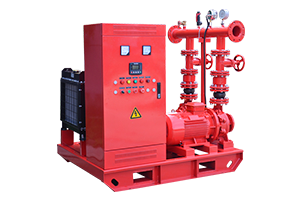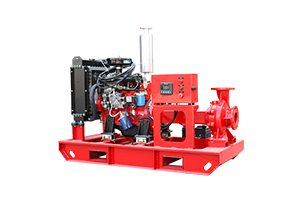-
 Nov 12, 2024What Are the Best Applications for Diesel-Driven Fire Pumps?Diesel-driven fire pumps are highly reliable and versatile, making them ideal for specific applications where an independent power source is crucial. Here are some of the best scenarios to deploy diesel-driven fire pumps:
Nov 12, 2024What Are the Best Applications for Diesel-Driven Fire Pumps?Diesel-driven fire pumps are highly reliable and versatile, making them ideal for specific applications where an independent power source is crucial. Here are some of the best scenarios to deploy diesel-driven fire pumps:
View details -
 Nov 12, 2024How to Maximize Fire Pump System Efficiency with Jockey Pumps?Maximizing fire pump system efficiency with jockey pumps is a smart way to ensure reliability while minimizing wear and tear on the main fire pumps. Here are some strategies to optimize their performance:
Nov 12, 2024How to Maximize Fire Pump System Efficiency with Jockey Pumps?Maximizing fire pump system efficiency with jockey pumps is a smart way to ensure reliability while minimizing wear and tear on the main fire pumps. Here are some strategies to optimize their performance:
View details -
 Nov 11, 2024Why Is Fire Pump Impeller Design Important for Performance?The design of a fire pump impeller is crucial for optimal performance because the impeller is the main component that drives water through the pump to generate the required pressure and flow. Here’s why its design matters:
Nov 11, 2024Why Is Fire Pump Impeller Design Important for Performance?The design of a fire pump impeller is crucial for optimal performance because the impeller is the main component that drives water through the pump to generate the required pressure and flow. Here’s why its design matters:
View details -
 Nov 11, 2024What Are the Key Differences Between Horizontal and Vertical Fire Pumps?Horizontal and vertical fire pumps differ primarily in their configuration, installation requirements, and suitability for specific applications. Here’s a breakdown of the key differences:
Nov 11, 2024What Are the Key Differences Between Horizontal and Vertical Fire Pumps?Horizontal and vertical fire pumps differ primarily in their configuration, installation requirements, and suitability for specific applications. Here’s a breakdown of the key differences:
View details -
 Nov 08, 2024Why Is it Essential to Perform Regular Fire Pump Drills?Regular fire pump drills are essential for ensuring fire safety and preparedness. Here are some key reasons why they’re necessary:
Nov 08, 2024Why Is it Essential to Perform Regular Fire Pump Drills?Regular fire pump drills are essential for ensuring fire safety and preparedness. Here are some key reasons why they’re necessary:
View details -
 Nov 08, 2024Which Fire Pumps Are Best for Government and Municipal Buildings?For government and municipal buildings, fire pumps must meet stringent safety and reliability standards to protect large numbers of people, critical infrastructure, and valuable assets. Here are some key options that are particularly well-suited for these environments:
Nov 08, 2024Which Fire Pumps Are Best for Government and Municipal Buildings?For government and municipal buildings, fire pumps must meet stringent safety and reliability standards to protect large numbers of people, critical infrastructure, and valuable assets. Here are some key options that are particularly well-suited for these environments:
View details






